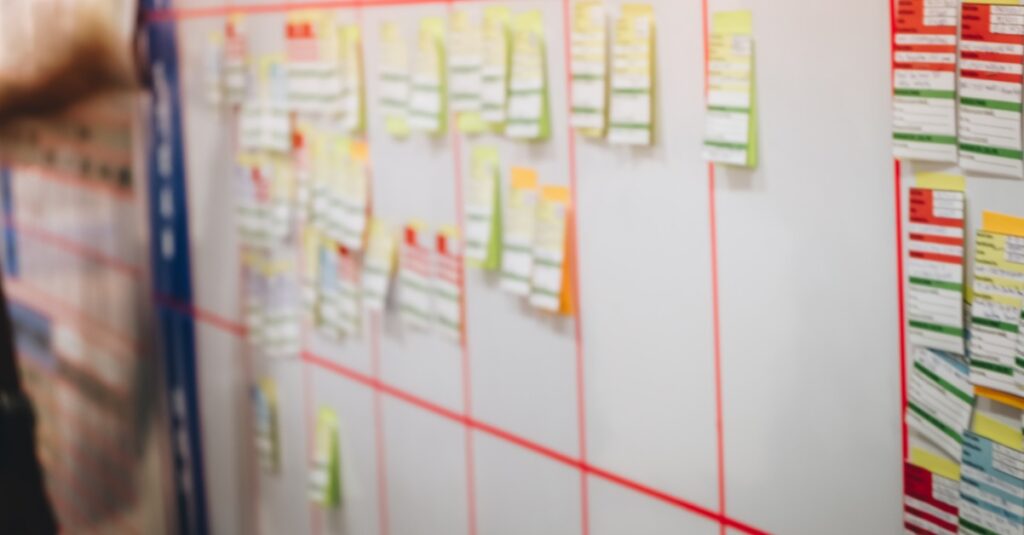The role of a lean change agent is a critical role for an organization. A lean change-agent acts as a catalyst in an organizational transformation. This role is one of the most ill-defined designations in many organizations. Although many companies hesitant to allocate a full-time role to their hierarchy, those companies who adopted this role have yielded prominent results and success in organizational excellence. The following are some of the most prominent roles of a lean change agent.
- Activate short term and long term cost saving projects
- Delegate ownership of projects to operational heads
- Develop a management system around projects
- Develop next level change agents
- Create a mechanism to standardize and share best practices
- Develop a long term lean transformation strategy and align with organizational strategy
Roles of the Lean Change Agent
1. Activate short term and long term cost saving projects
There are multiple tools in the Lean and Six-sigma tool box to diagnosis the opportunities in organizational activities. For an example, “Value Stream Mapping and Process Mapping” are the best tools to identify the value adding percentage of the organization and derive high impact high feasible projects that will rigorously reduce the inventory, work in progress and the throughput time. “Loss Tree” can be used to identify the biggest losses in the operation and increase the efficiency and productivity by few folds. “Built In Quality / Quality in to Process” is a vital tool recognize the courses of “Rejects and Reworks’ in the company to reduce cost of quality and gain higher precision.
Identifying above projects can be facilitated by the lean change agent with the correct lean tools. An experienced lean change agent could deploy the lean tools to identify those opportunities within few days depending on the size of the organization. Operational leadership needs this guidance as the lean change agent can work beyond departmental boundaries hence envisage a bigger and better overall picture of the problem.
2. Delegate ownership of projects to operational heads
Although the identification of the projects is spearheaded by the lean change agent, it is recommended to allocate operational heads to drive the projects related to the respective themes. For example, if the project theme is on “Rejects”, the Quality Head needs to lead the project. A cross-functional team has to be assigned, chosen from respective departments that will directly impact the reject rate. Although a reject is identified at the end of the processes, the point of occurrence of the defect can be in an upstream department. Therefore cross-functional team members will have to carry out actions in their respective departments to reduce the reject rate. The cross-functional team members will indirectly report to the project head until the project is over. The project leader along with the cross-functional team should determine the goals of the project and company leadership should approve the “Project A3” before the commencement.
The lean change agent should act as the facilitator of the project. It is important to allocate substantial time for process owners to engage in project activities. The biggest challenge is for the lean change agent is to focus on operational team members on the project activities amidst their daily routine work. The thumb rule is that the project team members need to allocate a minimum of 15% of their time on the projects. This 15% policy was proven with 3M and later adopted by many other innovative organizations across the world.
It is the lean change agent’s role to develop an organizational-wide policy with a leadership agreement which creates a win-win situation for both parties. It is not necessary to link the project results with monitory rewards, however, linking the project work to performance related pay schemes will create the assurance for teams that the time spent on additional projects will be recognized at the end of the year. In addition, non-monitory rewards such as constructive feedback, leadership acknowledgment, and public recognition could bring immeasurable satisfaction and motivation for the teams.
3. Develop a management system around projects
The intensity of the project review mechanism will determine the success or the failure of the project. The lean change agent must develop a project review criteria staging from cross-functional team reviews, project leader,s and top management project reviews. The lean change agent as the facilitator should block the calendars, develop meeting agendas (at least for the first month), allocate people for taking meeting minutes, and rigorously monitor the attendance of participants. in addition, weekly project summary reports, project bulletin, success stories have to be shared among the rest of the employees. It is important to uncover the challenges of the teams and mediate with top management offline to provide pragmatic solutions faster.
4. Develop next level change agents
In the project reviews, the lean change agent will act as a policeman, yet at the same time, he/she should act as a teacher who delivers the wisdom for teams to attain the desired results. When the project is on the full run, the teams will need tested and proven methods to apply for the challenges they encounter. For example, say one of the teams needs to improve the changeover loss time. For this purpose, the project team may suggest multiple trial and error methods which will eat up the time as well as the uncertainty of the project way forward. However, as the lean change agent, he/she can conduct a training session on the 5 step approach on SMED, the tested and proven changeover reduction methodology.
Similarly, all the cross functional project team members need to be equipped with lean tools. The lean change agent can design a training program that include essential lean tools such as “8 Wastes”, 5S, Visual Factory, Gemba Kaizen, 8 step problem solving, A3 thinking, Standardized Work, Job Instruction Training, Process Mapping etc.
In addition, he/she could include special modules focused on the type of problem that each project team tackles. For an example, Built-In Quality and Six Sigma for Quality projects, Pull system kanban for inventory and throughput time reduction projects, TPM for machine-related projects, Lean Human Value Stream for labor and people related projects, Target costing, value engineering, and front-loading for product development projects, Hoshin Kanri, Kamishibai and LSTW for strategy deployment projects, SMED for changeover time improvement projects. Based on the type of the problem, the lean change agent can combine some of the above topics to converge the lean tools to derive the results rapidly.
Delivering general lean belt programs is not recommended in the project-related environments as knowledge overdose could derail the focus of the project teams. The purpose here is to deliver the essential knowledge at the shortest possible time for the project teams to storm towards success. It is important to note that the cross-functional teams have already dedicated a minimum of 15% of their time for the projects and lean change agent should capitalize their time to meet the project goals on-time.
5. Create a mechanism to standardize and share best practices
There will be multiple process innovations and new management behaviors derived from lean cross-functional projects. These tested and proven methodologies should be applied in other parts of the organization and it should take lesser time than the original project span as there is no ambiguity of the success of these methods. The lean change agent should document all the best practices in the organization and cross-pollinate these practices across departments and sister companies.
The lean change agent should develop a standard mechanism for best practice standardization. For example, methodologies and practices to reduce the reject rate in product X can be applied to Project Y as well. To enable the cross-pollination lean change agent should create forums where the leaders of respective value streams get to gather and discuss the implementation processes.
The leadership of the organization strictly follows the best practice standardization process where the process could stage from within department, inter-department, and across sister companies/ branches. After the documentation, a lean change agent needs to develop a process evaluation mechanism with a scoring system. This is a progressive document that will get updated every one year or several years depending on the comprehension. This evaluation tool should consist of the phases of the application of the lean tools and the operational results that are expected at each phase. The same criteria can be used to measure the level of process maturity in each department or sister organization.
6. Develop a long term lean transformation strategy and align with organizational strategy
With the success of the lean projects and the horizontal replication of the best practices across the organization, a considerable cost, lead-time, and quality improvement are expected. As a thumb rule, a 30% – 50% improvement is expected after the first year of the project implementation. And the process evaluation tool should ensure that the best practices are implemented across the organization and the score of the process maturity will help to identify the gaps in the processes.
While improving the operational activities with business projects, the lean change agent can now look for international lean benchmarking tools that help to evaluate the level of operational maturity compared to lean giants like Toyota. The success stories of previous lean projects will diminish the resistance from employees in adapting world-class manufacturing methodologies.
The lean change agent must work very closely with the top management and need to have multiple offline and online conversations in convincing the importance of aligning lean operational strategies for the company’s long-term visions. Proven tools like Hoshin Kanri policy deployment can be used to strategizing the company’s long-term vision and involve critical leadership lean bandwagon.



